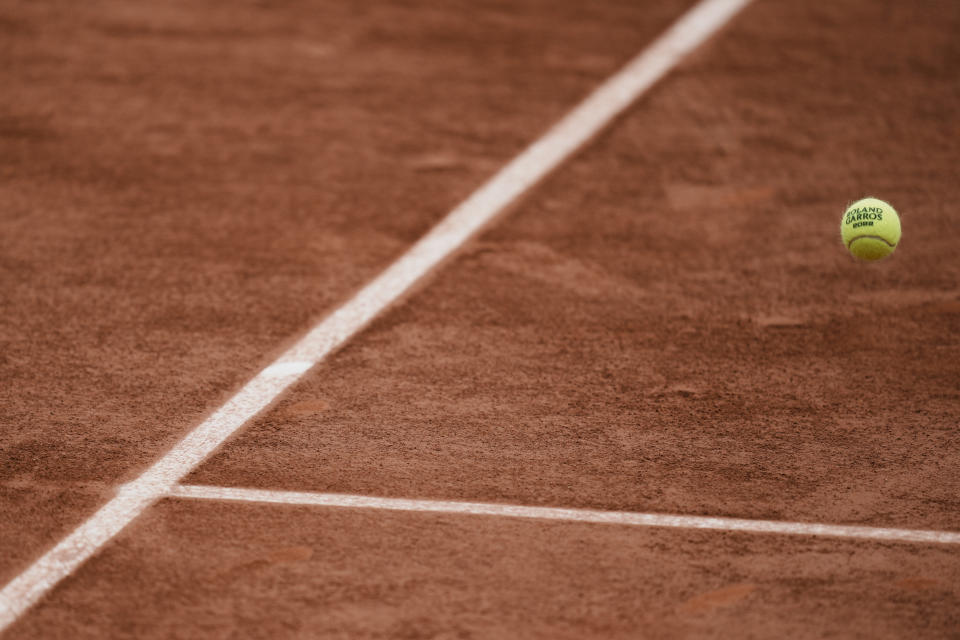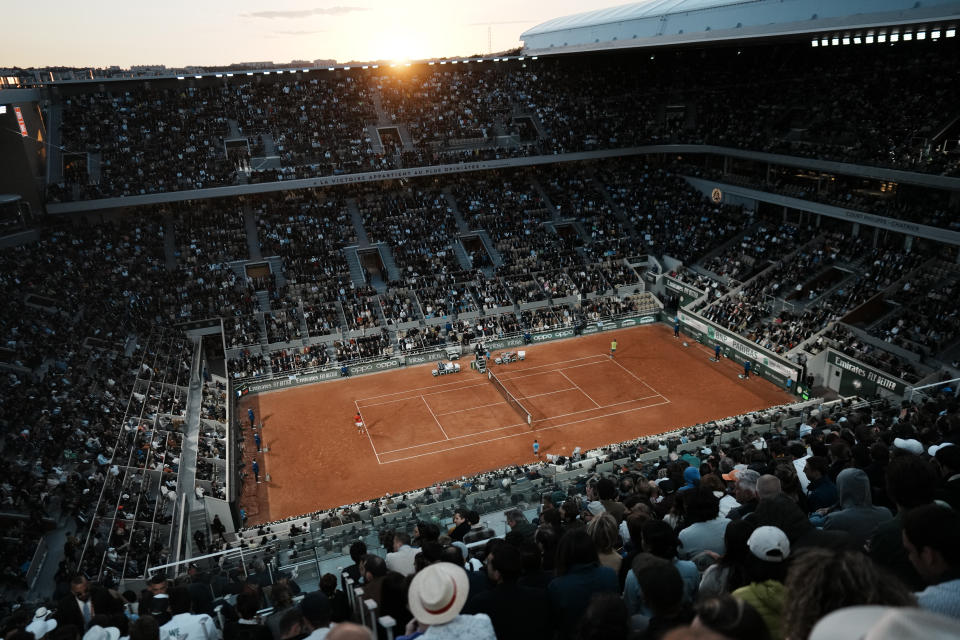What is it about French Open clay that makes for surprises?
PARIS (AP) — Why is the French Open more likely to produce first-time and one-time Grand Slam champions than the Australian Open, Wimbledon or the U.S. Open? Why are there so many surprising results at Roland Garros? What distinguishes its red clay from the surfaces used at the three other major tennis tournaments?
THE CLAY
The French Open is the only Grand Slam tournament held on clay courts — which actually aren't made of clay, but rather the dust from red brick on top of a layer of crushed white limestone.
Wimbledon, which begins this year on June 27, is famously contested on grass. The U.S. Open, which starts on Aug. 29, and Australian Open, held in January, each uses a different type of hard court.
The softness and speed-absorbing grab of clay courts slow down shots more than the other surfaces do, dulling speedy serves and groundstrokes. The clay’s grittiness magnifies the effect of heavy spin (think of 13-time Roland Garros champion Rafael Nadal’s uppercut lefty forehands), creating higher arcs as the balls rebound off the ground.
“Clay is a completely different surface from hard courts and grass,” said Tamara Zidansek, who reached the semifinals in Paris a year ago while ranked 85th. “It’s such a specific surface.”
STYLE OF PLAY
Because booming serves and quick-strike forehands relied on by so many players are not as effective on clay as hard or grass courts, there is an increased reward for strategy, for switching speeds and spins, for drop shots.
“On clay, you have to hit a lot of balls to win matches. If you’re not quite 100 percent confident, it really shows up,” said International Tennis Hall of Fame member Martina Navratilova, who won two of her 18 Grand Slam titles at the French Open. “It’s harder to win matches when you’re not playing well.”
Katerina Siniakova, a Grand Slam doubles champion who beat then-No. 1 Naomi Osaka in the third round in Paris while ranked 42nd in 2019, described the effect of clay this way: “You have to really win the point. It’s not as easy as the hard courts to win a point, because it’s not so fast. A more creative player can play better on clay and use it as an advantage for them. You can’t use as much slice or drop shots on hard courts.”
ENDURANCE
Points tend to be longer. So do matches: Women’s matches in Paris last year averaged 1 hour, 39 minutes, 42 seconds; that’s 3 minutes longer than at the U.S. Open, more than 6 minutes longer than at the Australian Open, and more than 8 minutes longer than at Wimbledon. Men’s matches — which are best-of-five-sets; women’s are best-of-three — averaged 2 hours, 39 minutes, 24 seconds in 2021, 11 minutes longer than at the Australian Open and 6 minutes longer than at Wimbledon. Matches at the 2021 U.S. Open averaged 2 hours, 50 minutes, 35 seconds, but were shorter than at Roland Garros in previous years over the past decade.
THE ELEMENTS
All surfaces can be effected by the temperature, but clay courts tend to alter more in extreme heat and cold — Nadal’s quarterfinal win over No. 1 seed and defending champion Novak Djokovic in Paris on Tuesday night was contested with the temperature in the 50s Fahrenheit (teens Celsius) — or on a damp or breezy day.
“Grass does change a little, but I feel like the clay is alive. You have to play with it,” said Felix Auger-Aliassime, a semifinalist at last year’s U.S. Open. “Sometimes the clay is more dry and the bounce is going to be different. Other weeks, it’s very humid and very soft and it plays differently. The whole clay swing, from one week to another, the conditions change a lot.”
It can be as simple as wind blowing dust off the top of the court at Roland Garros, creating patches that are thicker or thinner.
“I feel like people sometimes forget, because it’s red and it looks the same, but they don’t see the amount of clay,” said Tokyo Olympics gold medalist Belinda Bencic, who grew up mostly playing on indoor hard courts in Switzerland. “They don’t see how it changes. They don’t see how fast it is or how hard. You can’t see that on TV.”
MOVEMENT
Footwork is crucial on clay, which allows players to slide into shots. The trick is to do that properly.
Bencic, for example, says her open-stance way of hitting and lack of play on clay growing up make that aspect harder for her.
“My movement is not really made for clay. I have a huge advantage on grass because of my stance,” she said. “I have to think about it on clay. It doesn’t come naturally.”
THE SPECIALISTS
Some players, particularly from Europe or South America, learn the sport on clay. Folks agree that can be a significant advantage.
“You get a lot of guys that it is ... their ‘home’ surface, kind of what they grew up playing on. That’s what suits their game and so they’re much more comfortable on it than I am,” said Taylor Fritz, an American seeded 13th in Paris who lost to Bernabe Zapata Miralles, a Spanish qualifier ranked outside the top 125. “And maybe I wouldn’t lose to lots of these people on a hard court, but on a clay court, on any given day, there’s definitely more people that I could lose to.”
THE SEASON
There are far fewer events on clay than hard courts. The ATP calendar for 2022 includes 39 tournaments on hard courts, 12 on clay and eight on grass. The current WTA program for this season shows 30 on hard courts, 14 on clay and seven on grass.
So it stands to reason that pros might prefer to focus their efforts on the more frequently used surfaces.
Also, as Djokovic explained, there is an adjustment when the European clay-court circuit that leads up to the French Open arrives.
“Historically it always has required some time and several tournaments to really feel comfortable playing on clay,” he said. “Rarely did I feel my best on clay in the first or second tournament in the season.”
___
Follow Howard Fendrich on Twitter at https://twitter.com/HowardFendrich
___
More AP Tennis: https://apnews.com/hub/tennis and https://twitter.com/AP_Sports

 Yahoo Sport
Yahoo Sport 








































